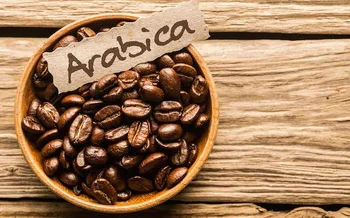Everybody perceives a cooked espresso bean; however you probably won't perceive a genuine espresso plant.
White blooms on espresso tree

Espresso trees are pruned short to ration their vitality and help in gathering however can develop to in excess of 30 feet (9 meters) high. Each tree is secured with green, waxy leaves becoming inverse each other two by two. Espresso fruits develop along the branches. Since it develops in a consistent cycle, it's not bizarre to see blooms, green foods grown from the ground organic product at the same time on a solitary tree. It takes almost a year for a cherry to develop after first blossoming, and around 5 years of development to arrive at full natural product generation. While espresso plants can satisfy 100 years, they are commonly the most beneficial between the ages of 7 and 20. Legitimate consideration can keep up and even increment their yield throughout the years, contingent upon the assortment. The normal espresso tree produces 10 pounds of espresso cherry every year, or 2 pounds of green beans.The trees grow best in rich soil, with mild temperatures, frequent rain and shaded sun.
Coffee follows its
inception to a variety of plants known as Coffea. Inside the class there are
more than 500 genera and 6,000 types of tropical trees and bushes. Specialist’s
gauge that there are somewhere in the range of 25 to 100 types of espresso
plants.The family was first
depicted in the eighteenth century by the Swedish botanist, Carolus Linneaus,
who likewise portrayed Coffea Arabica in his Species Plantarum in 1753.
Botanists have differed as far back as on the precise characterization, since
espresso plants can go broadly. They can be little bushes to tall trees, with
leaves from one to 16 creeps in size, and in hues from purple or yellow to the
transcendent dim green.
In the business
espresso industry, there are two significant espresso species — Arabica and Robusta.

Arabica
Different types:
Bourbon, Typica, Caturra, Mundo Novo, Tico, San Ramon, Jamaican Blue
Mountain
Coffea Arabica is
slipped from the first espresso trees found in Ethiopia. These trees produce a
fine, gentle, sweet-smelling espresso and speak to roughly 70% of the world's
espresso creation. The beans are compliment and more prolonged than Robusta and
lower in caffeine.
On the world market,
Arabica espressos the most astounding costs. The better Arabicas are high
developed espressos for the most part developed between 2,000 to 6,000 feet
(610 to 1830 meters) above ocean level — however ideal elevation changes with
vicinity to the equator.
The most significant
factor is that temperatures must stay gentle, in a perfect world between 59 -
75 degrees Fahrenheit, with around 60 crawls of precipitation a year. The trees
are healthy, yet a substantial ice will execute them.

Arabica trees are
expensive to develop on the grounds that the perfect landscape will in general
be steep and access is troublesome. Likewise, in light of the fact that the
trees are more malady inclined than Robusta, they require extra care and
consideration.
Robusto
The greater part of the
world's Robusta is developed in Central and Western Africa, portions of
Southeast Asia, including Indonesia and Vietnam, and in Brazil. Creation of
Robusta is expanding; however it represents just about 30% of the world market.
Robusta is essentially
utilized in mixes and for moment espressos. The Robusta bean itself will in
general be marginally rounder and littler than an Arabica bean.
The Robusta tree is
heartier and increasingly impervious to illness and parasites, which makes it
simpler and less expensive to develop. It likewise has the upside of having the
option to withstand hotter atmospheres, leaning toward consistent temperatures
somewhere in the range of 75 and 85 degrees Fahrenheit, which empower it to
develop at far lower heights than Arabica.

It requires around 60 creeps of precipitation a year, and can't withstand ice. Contrasted and Arabica, Robusta beans produce an espresso which has an unmistakable taste and around 50-60% more caffeine.
The Anatomy of a Coffee Cherry
The beans you mix are
really the handled and cooked seeds from a natural product, which is known as
an espresso cherry.
The espresso cherry's external skin is known as the exocarp. Underneath it is the mesocarp, a meager layer of mash, trailed by a disgusting layer called the parenchyma. The beans themselves are canvassed in a paper-like envelope named the endocarp, all the more regularly alluded to as the material.Inside the material, next to each other, lie two beans, each secured independently by one more dainty layer. The natural name for this seed skin is the spermoderm, yet it is for the most part alluded to in the espresso exchange as the silver skin.

In about 5% of the world's espresso, there is just one bean inside the cherry. This is known as a peaberry (or a caracol, or "snail" in Spanish), and it is a characteristic change. A few people accept that peaberries are really better and tastier than standard beans, so they are in some cases physically dealt with for unique deal.
Thank you guys for reading it!
Source:
For
images: google.com
For
information: http://www.ncausa.org/About-Coffee/What-is-Coffee
Great information. thanks for the information to the coffee lover like me. :) :) :)
ReplyDeleteIt really helps enhancing my knowledge..
ReplyDelete